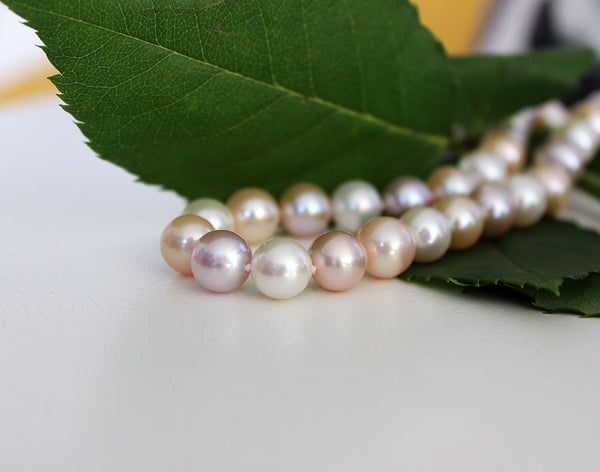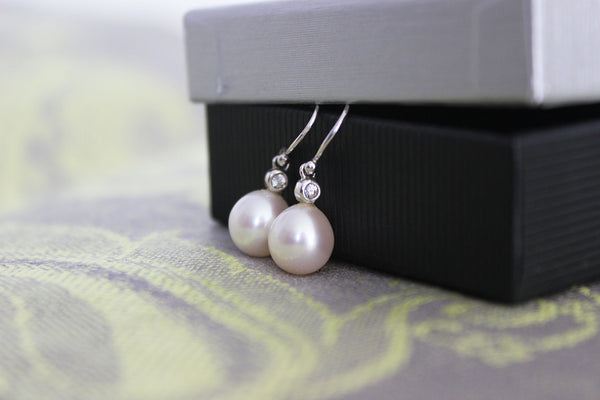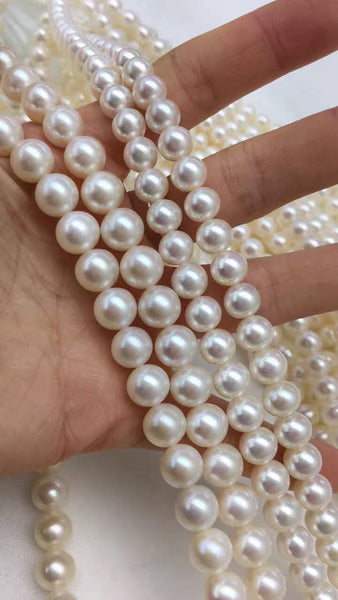Freshwater Pearls
What Are Freshwater Pearls?
Freshwater pearls are grown in fresh water, such as lakes, rivers and manmade ponds. While a very small production comes from Lake Biwa and Lake Kasumigaura in Japan and the US state of Tennessee, the majority of these gems seen on the market today are cultured in China.
How Are They Cultured?
The mussel species that produces freshwater pearls is called Hyriopsis cumingii, commonly known as the “triangle mussel”. Although the Chinese knew how to cultivate the earliest blister pearls back in the 13th century, it wasn’t until the mid-1990s when they started producing high quality harvest.
The main distinction that separates the freshwater variety from the other saltwater types lies in the way they’re nucleated. In general, freshwater pearls are tissue nucleated. They do not contain bead nuclei and are composed of all nacre. As there's no bead, it is very rare for the mussel to produce perfectly round or near-round shapes. More than 98% of the harvest come in a variety of non-round shapes, such as oval, button, drop, baroque and etc.
Unlike the saltwater cultivation where a round bead is inserted inside the oyster’s gonad, famers usually implant up to 40 tissue pieces in the mantle of a freshwater host mussel when it is about 6 months to 1 year old. It usually takes the mussel 3 to 5 years to yield pearls, although some can take up to 7 years to grow.

Natural freshwater pearl colours include white, cream, peach, pink and lavender. Any dark shades such as black and golden are not natural, and are the result of colour treatment.
During the late 90s, Chinese farmers started growing second-generation pearls. This occurs when healthy mussels are returned to the water after the first harvest. At that point, the mussel continues to secrete nacre in the existing pearl sacs. The yielded gems, often known as “soufflé” or “keshi”, are usually large with intriguing shapes and beautiful orient. Different shaped beads such as button, coin or spherical are sometimes used to produce bead-nucleated gems with eye-catching shapes.
Journey of Top Gem Quality Production
When the first Chinese freshwater cultured pearls appeared in the 1970s, their quality is very low. The industry called them “rice pearls” as the gems produced by the cockscomb mussel were shaped like rice grains with yellowish colour and lower lustre. By mid-1990s, Chinese farmers switched the mussel species and started cultivating in the triangle mussel. This marked the beginning of the improvement of their pearl quality. The leap in refining the culturing techniques took place when researchers and farmers experimented with the Japanese Biwa and its hybrid (called “leisure mussel”) with the triangle mussel in the late 1990s. They found the mussels grew bigger and yielded better quality gems with more intense colours. It’s important to note that Biwa pearls are virtually all produced in China today. Due to water pollution and overcrowding in Lake Biwa, the production in Japan almost ceased in the 90s. Only a very small quantity is produced in the region.
Chinese pearl farmers continued their effort in advancing the cultivation techniques. The overall quality of these gems has improved enormously. They are larger, rounder with mirror-like lustre and beautiful colours. Today, the finest freshwater pearls can easily rival the finest Akoya and South Sea variety in lustre and size.
However, these top quality gems merely take up less than 1% of the entire production annually. The majority of the harvest contains junk grades used in cosmetics and commercial grades used in lower-end jewellery.
Compared to other types, freshwater pearl jewellery is the most popular among women with its great versatility and affordable price tags. However, the fine quality freshwater variety with beautiful shine is a lifetime treasure that can command high prices.
At Pearl-Lang, all of our freshwater pearls are individually selected for their fine quality from the top 1% of the harvest in China. You can be assured with their quality and durability.







